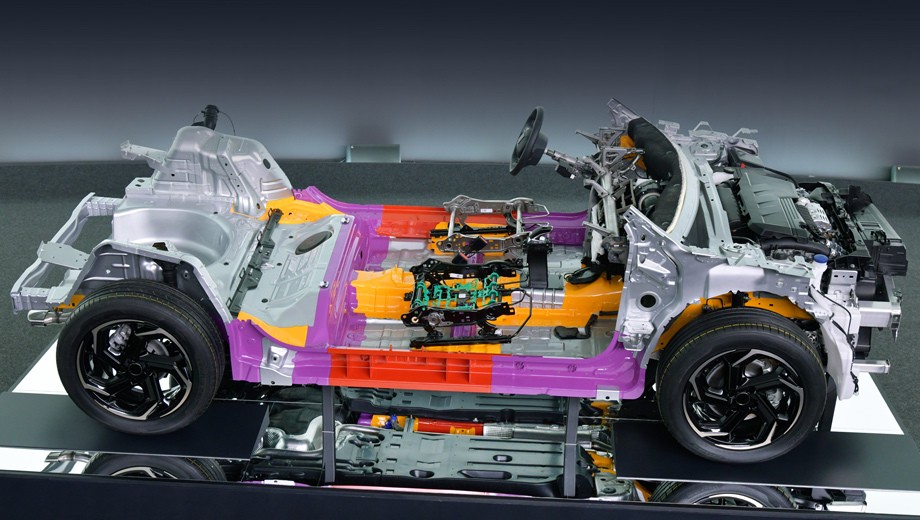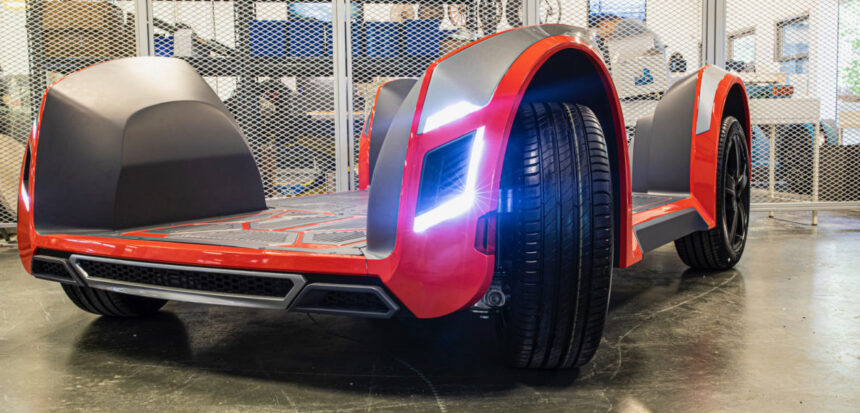The automotive industry has always been at the forefront of technological advancements, constantly evolving to meet consumer needs and environmental demands. In recent years, a significant shift has been happening under the hood of many new vehicles. Modular vehicle platforms, often likened to the Lego bricks of the automotive world, are revolutionizing how cars are designed and produced. These versatile and scalable platforms are transforming vehicle development by offering flexibility, efficiency, and cost-effectiveness, leading to a new era of automotive manufacturing.
What Are Modular Vehicle Platforms?
At the core of modular vehicle platforms lies a simple yet groundbreaking concept: standardizing key components such as the chassis, powertrain, and electronics into a universal base that can be adapted to a wide range of vehicle types. This approach allows automakers to produce different models, including sedans, SUVs, trucks, and electric vehicles (EVs), using the same core platform. Think of it like building with Lego bricks—once you have a solid foundation, you can combine different pieces to create a variety of designs and configurations.
The concept of modularity in vehicles isn’t new. In fact, it has been in use for decades. However, the rise of electric vehicles, autonomous driving technologies, and the increasing demand for sustainable manufacturing processes have accelerated its adoption in recent years. Companies like Volkswagen, Toyota, and GM have already adopted modular platforms, and this trend is expected to continue as the automotive world shifts toward more customizable, cost-effective, and eco-friendly solutions.
The Advantages of Modular Platforms in the Automotive Industry
The rise of modular platforms offers several significant benefits to both manufacturers and consumers alike. Let’s explore some of the key advantages driving this transformation in vehicle production.
1. Cost Reduction and Efficiency
One of the primary reasons automakers are increasingly adopting modular vehicle platforms is the ability to reduce production costs. Traditional vehicle manufacturing requires creating a new platform for each individual model, which involves designing unique components and engineering solutions. This process is not only time-consuming but also expensive.
Modular platforms, on the other hand, allow manufacturers to design a single, versatile base that can be easily adapted to different vehicle types. By streamlining the production process, automakers can produce multiple models with minimal variation in the underlying platform. This results in economies of scale, as the same components and production techniques can be used across various models.
2. Faster Time-to-Market
Another advantage of modular platforms is the ability to bring new vehicles to market faster. By using a standardized platform, automakers can accelerate the development process. Instead of starting from scratch with every new model, manufacturers can focus on designing the vehicle’s exterior, interior, and features while relying on a proven modular platform for the core architecture.
This shorter development cycle means automakers can respond more quickly to market demands, consumer preferences, and technological advancements. As a result, modular vehicles allow for faster innovation and product rollouts, which is crucial in today’s competitive automotive landscape.
3. Flexibility and Customization
One of the most exciting aspects of modular vehicle platforms is their inherent flexibility. Since the core platform can be adapted to different vehicle types, manufacturers can create a wide range of models without significant redesigns. For example, the same platform can be used to create both a compact sedan and a larger crossover SUV.
This adaptability also extends to the inclusion of various powertrains, such as gasoline, hybrid, or fully electric configurations. Consumers can choose from a variety of models built on the same platform, giving them the freedom to select a vehicle that fits their needs and preferences, all while benefiting from the same underlying design.
Modular Platforms and Electric Vehicles (EVs)
The shift toward electric vehicles has played a pivotal role in the rise of modular vehicle platforms. Electric vehicle manufacturing presents unique challenges due to the need for specialized components like battery packs and electric motors. Modular platforms have become an essential tool for addressing these challenges, allowing automakers to design platforms that can accommodate different powertrain options, including electric drivetrains.
By adopting modular platforms, manufacturers can more easily scale their electric vehicle offerings. For example, an automaker could develop multiple electric vehicle models, such as a compact city car, a sports sedan, and a family-friendly SUV, all using the same core platform. This not only reduces development costs but also makes it easier to introduce new EV models to the market quickly and efficiently.
Additionally, modular platforms allow for future-proofing in the face of rapidly evolving EV technologies. As battery technology continues to improve and charging infrastructure expands, modular platforms provide the flexibility needed to update and upgrade vehicle components without redesigning the entire vehicle. This future-proofing capability ensures that manufacturers can stay ahead of technological trends and meet consumer demand for greener and more sustainable vehicles.
How Modular Platforms Impact Vehicle Design

While modular platforms offer numerous benefits, they also influence the way vehicles are designed. Traditionally, vehicle design was largely focused on aesthetics, with the platform being a secondary consideration. With the rise of modular platforms, however, design and engineering must work more closely together.
Vehicle designers must consider the constraints and possibilities of the modular platform from the outset, ensuring that the platform’s dimensions, weight distribution, and powertrain options are taken into account when designing the vehicle’s exterior and interior. This shift in focus has led to a more integrated and collaborative approach to automotive design, with engineers and designers working together to create vehicles that are not only functional but also visually appealing.
Additionally, modular platforms have led to an increase in the use of digital tools and simulation software. Manufacturers can use these tools to model and test different vehicle configurations, ensuring that the final design meets performance, safety, and efficiency standards before production begins.
The Future of Modular Vehicles
As the automotive industry continues to embrace modular vehicle platforms, we can expect several trends to shape the future of vehicle manufacturing. The integration of advanced technologies, such as autonomous driving systems, artificial intelligence, and 5G connectivity, will drive further innovation in modular vehicle design.
Automakers will also continue to refine their modular platforms to improve efficiency and sustainability. For example, lightweight materials and energy-efficient manufacturing processes will become increasingly important as companies strive to reduce the carbon footprint of their vehicles. Modular platforms will be crucial in enabling these innovations, as they allow manufacturers to experiment with new materials and technologies without completely overhauling the vehicle design.
Moreover, as consumer demand for electric and hybrid vehicles grows, modular platforms will play a key role in ensuring that automakers can quickly adapt to the changing market. The ability to easily swap out powertrains and integrate new technologies will enable manufacturers to stay competitive in the fast-evolving automotive landscape.
Conclusion
Modular vehicle platforms are transforming the automotive industry, offering a wide range of benefits, including cost reduction, faster development cycles, and enhanced flexibility. By adopting these versatile platforms, automakers can design and produce a variety of vehicles with a single base, allowing for greater customization and more efficient production.
As the demand for electric vehicles grows and technological advancements continue to reshape the automotive landscape, modular platforms will become even more critical. They offer the flexibility needed to adapt to new powertrain technologies, improve vehicle performance, and meet sustainability goals. As we look to the future, modular vehicle platforms will undoubtedly play a crucial role in shaping the next generation of vehicles, bringing us closer to a more efficient, customizable, and sustainable automotive industry.
